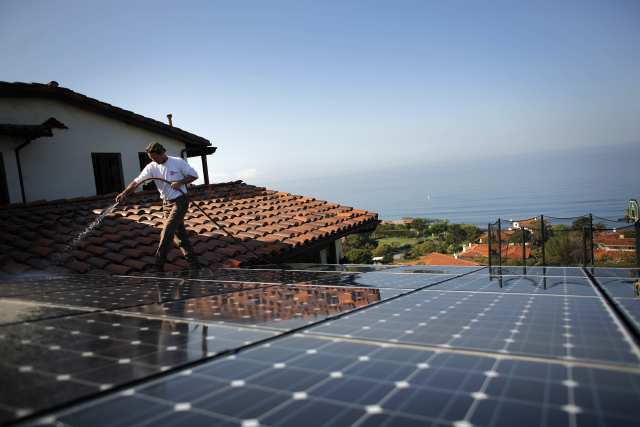 Solar industry groups release report in CopenhagenDec 14, 2009 - LA Times
The report covers solar industry activity in several countries and regions, and includes data on job growth and carbon dioxide emissions offsets associated with solar targets. By 2020, European Union countries are aiming to rely on renewable resources for 20% of energy consumed. If the European photovoltaics industry is able to meet up to 12% of the region’s electricity demand by then, it could translate into 5.5 million jobs in Europe and the reduction of at least 220 million metric tons of carbon dioxide per year by 2020, according to the report. India hopes to install 20 gigawatts of solar facilities by 2020, while China is aiming to produce 20 gigawatts-peak, when the sun shines strongest. The U.S. hopes to use solar technologies to offset 570 million metric tons of carbon dioxide emissions by 2020 while creating 882,000 related jobs, according to data provided by Solar Energy Industries Assn. (SEIA) in Washington, D.C. “Those countries willing to invest in solar will see substantial economic returns,” said SEIA chief executive Rhone Resch in a conference call with reporters this morning. “Our goal is to make solar as easy to connect to your home as it is to connect to Internet.” Solar photovoltaics are being targeted to produce 10% of the country’s electricity by 2020, while drawing from solar thermal techniques used for water and space heating and cooling for 3% of electricity needs. According to the plan, another 2% of electricity will be drawn from concentrating solar power (CSP) technology, which uses mirrors to reflect and concentrate sunlight before converting it to heat. The photovoltaics could directly and indirectly create 676,000 jobs while avoiding 380 metric tons of carbon dioxide emissions each year by 2020. Solar thermal technology will create 139,000 jobs while offsetting 114 metric tons of carbon dioxide per year, according to SEIA. Concentrating solar power (CSP) technologies will lead to 67,000 jobs and 76 metric tons of offset carbon dioxide emissions. Around $1.1 trillion in gross investment will go into efforts to meet the solar power goals between now and 2020, according to SEIA. But to reach the target, photovoltaics must expand from the 1.5 gigawatts currently installed to 350 gigawatts, while thermal solar technology must grow from 1 million square meters currently in place to 70 million square meters. |
Updated: 2003/07/28
